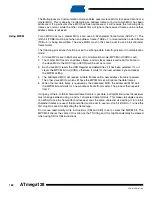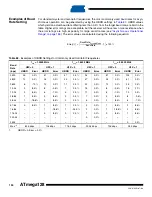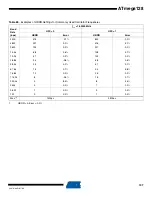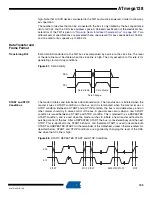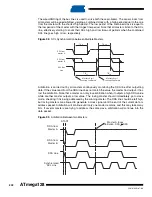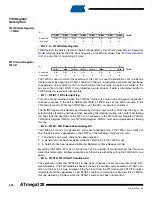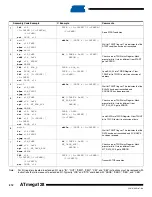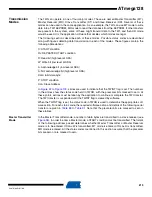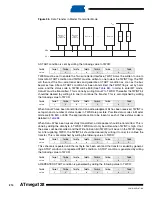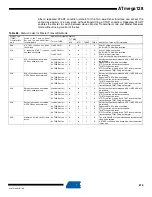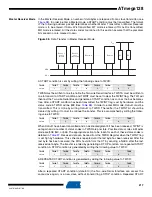
202
2467S–AVR–07/09
ATmega128
The wired-ANDing of the bus lines is used to solve both these problems. The serial clocks from
all masters will be wired-ANDed, yielding a combined clock with a high period equal to the one
from the master with the shortest high period. The low period of the combined clock is equal to
the low period of the master with the longest low period. Note that all masters listen to the SCL
line, effectively starting to count their SCL high and low time-out periods when the combined
SCL line goes high or low, respectively.
Figure 92.
SCL Synchronization between Multiple Masters
Arbitration is carried out by all masters continuously monitoring the SDA line after outputting
data. If the value read from the SDA line does not match the value the master had output, it has
lost the arbitration. Note that a master can only lose arbitration when it outputs a high SDA value
while another master outputs a low value. The losing master should immediately go to slave
mode, checking if it is being addressed by the winning master. The SDA line should be left high,
but losing masters are allowed to generate a clock signal until the end of the current data or
address packet. Arbitration will continue until only one master remains, and this may take many
bits. If several masters are trying to address the same slave, arbitration will continue into the
data packet.
Figure 93.
Arbitration Between two Masters
TA
low
TA
high
SCL from
master A
SCL from
master B
SCL Bus
Line
TB
low
TB
high
Masters Start
Counting Low Period
Masters Start
Counting High Period
SDA from
Master A
SDA from
Master B
SDA Line
Synchronized
SCL Line
START
Master A loses
Arbitration, SDA
A
SDA
Содержание ATmega128
Страница 384: ...vi 2467S AVR 07 09 ATmega128 Rev 2467C 02 02 377 Table of Contents i...
Страница 385: ...vii 2467S AVR 07 09 ATmega128...

